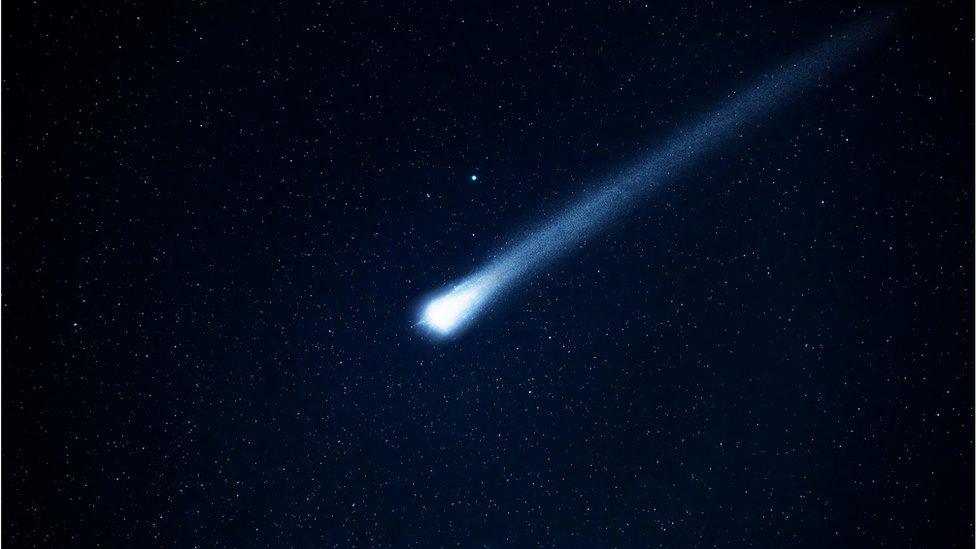Hubble telescope spots 'biggest ever' comet
- Published
- comments

A massive comet has been spotted by Nasa's Hubble Space Telescope.
Scientists think it's the largest comet ever discovered, and its nucleus is 50 times bigger than average.
Nasa says that it's over 80 miles long, which is the length of three marathons.
They believe the finding is significant because it will provide clues about how big comets are orbiting in the distant outskirts of our solar system.
What is a comet?
Comets are large objects made of dust and ice that orbit the Sun. They're like a giant dirty snowball.
As the comet moves towards the Sun, the heat begins to melt the ice and dust - turning it from a solid to a gas. This creates a beautiful, bright tail.
You can see a comet travelling through the sky when it is very far away from the Earth.
What is the Hubble Telescope?
Space scientist Dr Maggie Aderin-Pocock tells us why the Hubble Space Telescope is so important
It's been almost 32 years since the Hubble Space Telescope sent its first images back to Earth from space.
Launched in 1990, the telescope is one of Nasa's most important research tools.
Floating 350 miles above our heads, Hubble has beamed back images that are not only incredible to look at, but have completely changed our understanding of the universe!
From discovering that black holes exist, proving that space isn't empty, and helping to find new planets, the Hubble Telescope has been behind some amazing discoveries.
Why is this discovery important?
The comet nucleus is the solid, central part of a comet, sometimes called the dirty snowball.
The Hubble has discovered a comet nucleus which is 50 times bigger than the average sized comet.
It's thought it weighs 500 trillion tones, which is 40 percent heavier than any other spotted.
This comet is currently very far away from Earth, zooming along at about 22,000 mph.
Scientists think the comet is traveling from a place called the Oort Cloud, which is the most distant point of our solar system.
They believe that this is where most comets come from and reside.
- Published6 January 2022
- Published20 May 2020
- Published13 February 2023
